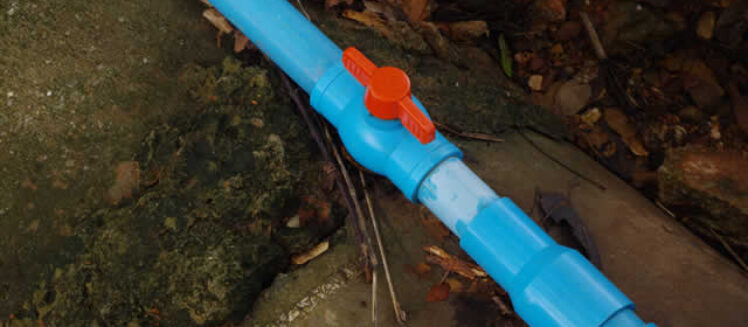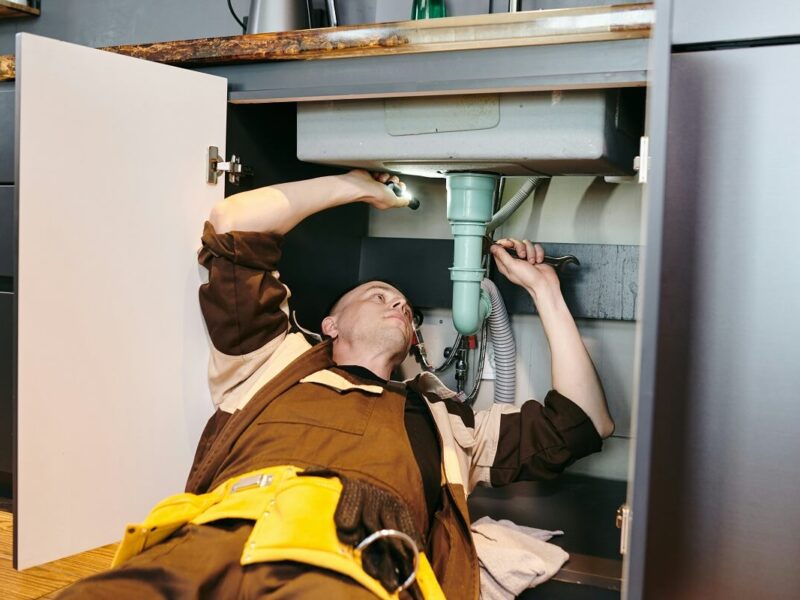Unpacking the Basics of Home Plumbing: A Beginner's Manual
Unpacking the Basics of Home Plumbing: A Beginner's Manual
Blog Article
They are making a number of good annotation on Plumbing Basics Every Homeowner Should Know in general in this post down below.

Plumbing is a necessary aspect of any kind of home, responsible for supplying tidy water for drinking, cooking, and bathing, along with removing wastewater securely. Comprehending the essentials of home plumbing is necessary for every single house owner to ensure appropriate upkeep, troubleshooting, and, if required, repair services. In this beginner's overview, we'll cover the essential principles of home plumbing to assist you come to be more familiar with how it functions.
Water Heating Unit
The water furnace is responsible for home heating water for residential usage, including bathing, food preparation, and cleansing. Usual kinds of hot water heater consist of tank-type water heaters, tankless (on-demand) water heaters, and heat pump water heaters. The hot water heater is connected to the water system system and delivers warm water to plumbing fixtures as needed.
Drain System
The drainage system eliminates wastewater from your home and carries it away to a sewage treatment facility or septic system. It contains a network of pipelines, installations, and fixtures that transport wastewater from plumbing components to the major sewage system line or septic system. Appropriate drainage is essential to protect against obstructions, backups, and sewer leakages.
Ventilation System
The ventilation system assists maintain proper atmospheric pressure and avoid sewage system gases from entering your home. Vent pipelines, likewise known as vent heaps, expand from plumbing fixtures to the roofing, allowing drain gases to get away safely outdoors. Ventilation pipes also permit air to get in the drainage system, facilitating smooth wastewater flow and stopping suction or vacuum effects.
Water Supply System
The water supply system brings tidy water into your home from a metropolitan water resource or an exclusive well. It includes a primary water line that links to your home's plumbing system, usually located underground. A water meter determines the amount of water eaten, while a shut-off shutoff allows you to control the flow of water into your home.
Plumbing Fixtures
Plumbing fixtures are gadgets that deliver water to numerous parts of your home and include sinks, taps, toilets, showers, bath tubs, and appliances such as dish washers and cleaning equipments. Each component is connected to the water system using pipelines and installations and might have its shut-off shutoff for maintenance or emergency situations.
Typical Plumbing Devices
Having the right devices handy is necessary for doing fundamental plumbing fixings and maintenance tasks. Typical plumbing devices include adjustable wrenches, monkey wrench, pliers, pipeline cutters, hacksaws, plungers, augers (or drainpipe snakes), and Teflon tape. Having these tools readily available can help you tackle minor plumbing issues successfully.
Basic Plumbing Fixings
While some plumbing repair work may require expert support, numerous typical problems can be addressed with fundamental DIY methods. Knowing just how to fix a dripping faucet, unclog a drainpipe, replace a bathroom flapper, or fix a dripping showerhead can conserve you money and time on plumbing repair work.
Final thought
Understanding the essentials of home plumbing is essential for every single house owner to preserve a risk-free, functional, and reliable plumbing system. By familiarizing yourself with the supply of water system, plumbing components, drain system, ventilation system, typical plumbing tools, and standard repair services, you can with confidence attend to minor plumbing concerns and ensure your home's plumbing system runs smoothly.
Plumbing for Beginners: A Comprehensive Guide
If you’re a beginner when it comes to plumbing, don’t worry; you’re not alone. Plumbing may seem intimidating, but with the right knowledge and a little practice, you can handle many common plumbing issues on your own. In this comprehensive guide, we will demystify the world of plumbing for beginners, providing you with the basic knowledge and skills needed to tackle common plumbing problems and even take on some DIY plumbing projects.
The Importance of Basic Plumbing Knowledge for Beginners:
First and foremost, basic plumbing knowledge gives you a solid foundation. It helps you grasp the key concepts and terminology that are essential in this field. By learning the basics, you’ll be able to build upon that knowledge and tackle more complex plumbing tasks in the future.
Having a basic understanding of plumbing also enables you to handle common issues that may arise in your home. Picture this: a leaky faucet or a clogged drain. With some basic plumbing knowledge, you’ll have the confidence to troubleshoot and fix these problems on your own. It saves you from unnecessary expenses and the hassle of waiting for a professional to arrive.
As a beginner, learning the basics of plumbing empowers you to take care of your own home. It gives you a sense of independence and self-reliance. You’ll no longer have to rely solely on professionals for every small issue that pops up. Instead, you can handle many tasks yourself, saving time and money in the process.
Remember, everyone starts as a beginner. Embrace the learning process and take small steps to expand your plumbing knowledge. There are plenty of online resources, tutorials, and even local workshops that talk about plumbing for beginners.
Essential Tools for Plumbing for Beginners
As you start your plumbing journey, having the right tools in your toolbox is crucial. Let’s explore some of the must-have tools:
Adjustable Wrench:
This versatile tool is a staple in any plumber’s toolbox. It allows you to tighten or loosen nuts and bolts of various sizes. Make sure to have an adjustable wrench with a comfortable grip.
Pipe Wrench:
A pipe wrench is specifically designed for gripping and turning pipes. It has serrated jaws that provide a strong grip, making it easier to loosen or tighten threaded pipes and fittings.
Plunger:
The plunger is a simple yet effective tool for clearing clogged drains and toilets. It creates suction when you push and pull, helping to dislodge blockages. Keep a good-quality plunger handy for those unexpected clogs.
Pipe Cutter:
When it comes to cutting pipes, a pipe cutter is your go-to tool. It creates clean, precise cuts without damaging the pipe. Look for a pipe cutter that can handle the pipe sizes you’re working with.
Hacksaw:
A hacksaw is useful for cutting through pipes, screws, and other materials. It’s a versatile tool that can handle different cutting tasks. Remember to use a blade suitable for cutting metal.
Tape Measure:
Accurate measurements are crucial in plumbing. A tape measure allows you to measure pipe lengths, distances, and dimensions accurately. Opt for a sturdy tape measure that extends a good length.
Pliers:
Pliers come in handy for various tasks, such as gripping, bending, and cutting. Slip-joint pliers with adjustable jaws are great for gripping pipes, nuts, and bolts.

I ran across that piece of writing on How Does the Plumbing Work in Your Home? while doing research the search engines. Enjoyed reading our content? Please quickly share it. Let someone else locate it. Thank you for going through it.
Click For More Information Report this page